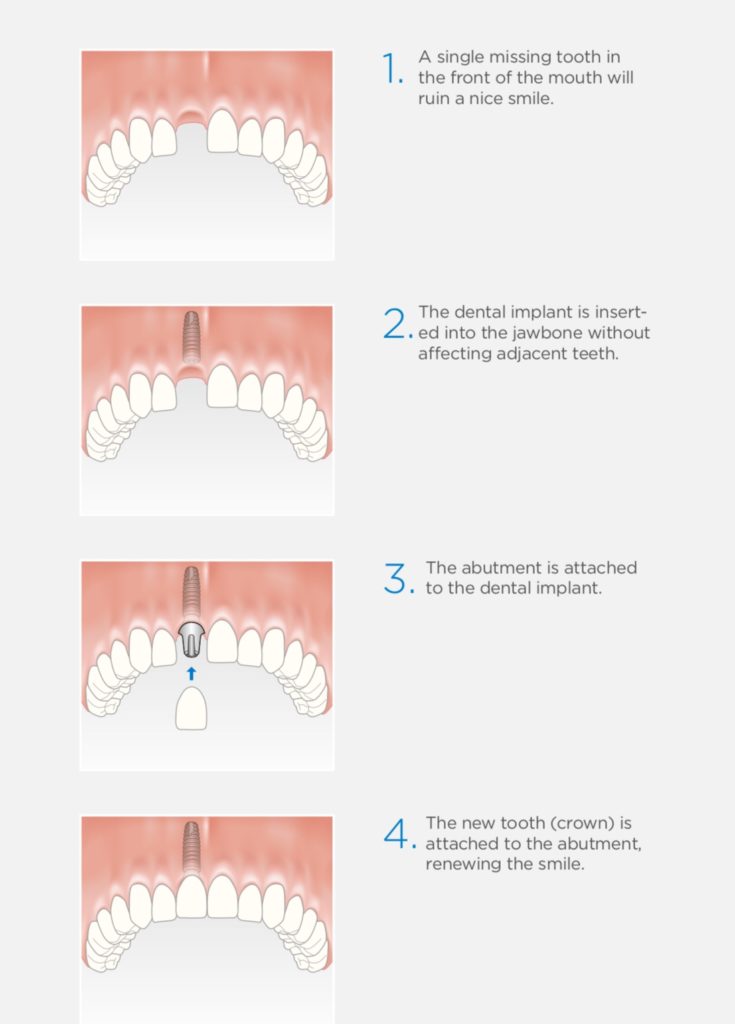Single Tooth Implant
Dentsply Sirona Implants — implants for life
Do you suffer from the discomfort of a missing tooth?
Oftentimes, missing a tooth in the visible esthetic area
can impact a person’s confidence while speaking and
smiling. Although missing a more hidden tooth presents
little esthetic concern, it can have a negative affect on
your chewing ability and other adjacent teeth, such as
cause them to shift position and create new places for
plaque and tartar to build up.
A dental implant is a small titanium screw that acts as
an artificial tooth root, and provides a stable foundation
for the final crown placement. Also, an implant preserves
healthy adjacent teeth by eliminating the need to grind
them down to support a bridge. Dental implants look,
feel and function just like natural teeth and enable you to
eat, speak and smile with confidence!
A proven therapy
Since the 1960s, dental implants have been used
successfully in millions of people worldwide as a
long-term solution for renewed quality of life.
Implants by Dentsply Sirona Implants are developed
based on biological and biomechanical principles.
Our implants are backed by extensive clinical and
scientific documentation.
The design of implants by Dentsply Sirona Implants
also allows for shorter healing times, less chairtime
for you as a patient, and the confidence of predictable
long-term and esthetic results that only decades of
clinical research can bring.
Treatment procedure
1 – A thorough examination
The first step of dental implant therapy is a discussion with your dentist, followed by a thorough
dental examination. The jaw is X-rayed to check the
condition of the bone tissue and to determine the
placement of the dental implant. An impression is
made of the jaw and existing teeth, forming an important platform for the treatment planning.
2 – Inserting the dental implant
There are two options for dental implant placement,
depending on your clinical situation. In a one-step
procedure, the dental implant is placed and then a temporary abutment is attached. In a two-step
procedure, the dental implant is inserted and then
covered by the gum, and left to heal for a maximum healing period of three months for the lower jaw, and six months for the
upper jaw. The abutment is attached at a later date.
3- Attaching the abutment
In a one-step treatment, the temporary abutment
is replaced by a permanent one after the dental
implant has bonded with the bone tissue. The second part of a two-step procedure involves making a
minor incision to open the gum and put the abutment in place. When the abutment is in place, a new impression is made
4 –Fitting and re-examination
When the crown is ready, your dentist simply
attaches it to the dental implant. This is usually followed by a few follow-up visits to check
functionality and esthetics. That’s all there is to
it, and it is virtually impossible to see the difference between the existing teeth and the new

